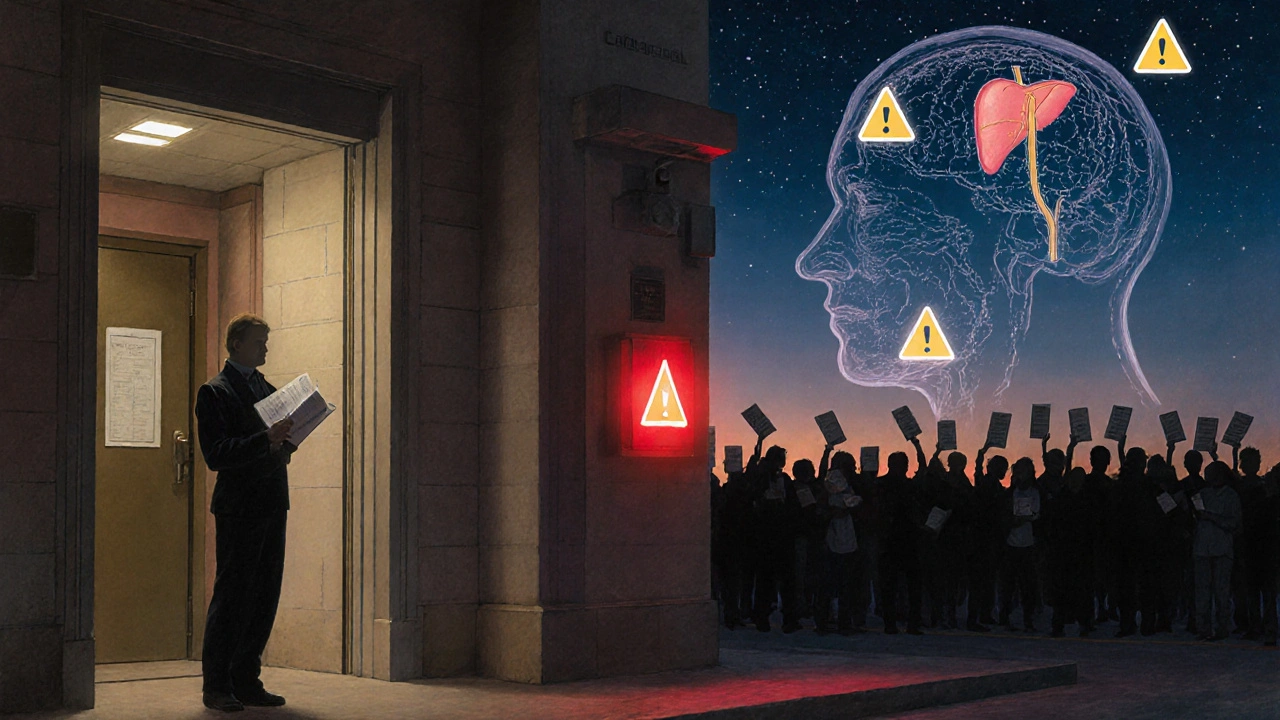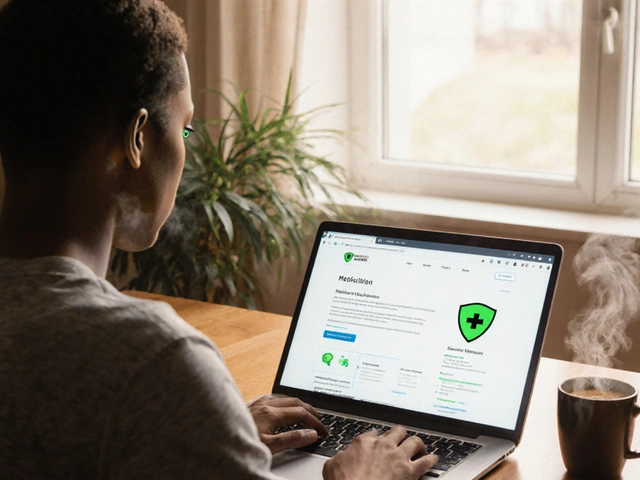When you get a safety communication about a medication, medical device, or vaccine, it’s not just a notification-it’s a signal to pay closer attention to your body. These alerts come from the FDA, WHO, or your healthcare provider when new risks are identified. Maybe a drug has been linked to rare heart issues. Maybe a device is failing in unexpected ways. Or perhaps a vaccine batch has shown unusual side effects. The alert doesn’t mean you’re definitely affected. But it does mean you need to start watching for signs that you might be.
Understand What the Safety Communication Is Telling You
Not all safety alerts are the same. Some are broad, like a warning that a class of painkillers might increase heart attack risk in older adults. Others are specific, like a recall of a particular batch of insulin due to contamination. The key is to read the full message. Look for: what exactly is the issue, who is affected, and what symptoms to watch for.The FDA’s medical device safety communications often list exact model numbers or lot codes. If your inhaler, glucose monitor, or implant matches the description, you’re in the group that needs to monitor. For drugs, check if the alert applies to your dosage, how long you’ve been taking it, or if you have other health conditions that raise your risk.
Don’t ignore the "why." If the alert says, "Patients with kidney disease have reported dizziness after taking this medication," and you have kidney disease, your risk level just went up. If you’re healthy and young, your risk may be low-but you still need to know what to look for.
Know What Symptoms to Track
Symptom monitoring isn’t about guessing. It’s about tracking specific, documented signs tied to the alert. For example:- If the alert mentions liver damage, watch for yellowing skin, dark urine, or unusual tiredness.
- If it’s about heart rhythm issues, note palpitations, chest tightness, or fainting spells.
- For vaccines or biologics, track fever over 101°F, swelling at the injection site lasting more than 48 hours, or new neurological symptoms like tingling or weakness.
Don’t rely on memory. Write it down. Use a notebook, a notes app, or a printable checklist from the FDA or CDC website. The CDC’s symptom monitoring guidelines recommend using standardized scales-like rating pain or fatigue from 0 to 10-so you can spot trends over time. A sudden jump from 2 to 7 on your pain scale matters more than a steady 3.
Choose Your Monitoring Method
There are two main ways to monitor: active and passive.Active monitoring means someone checks in with you. This is common for healthcare workers after exposure to infectious agents or patients in clinical trials. You might get daily texts asking, "Any new headaches? Fever?" You answer. They track it. This works well if you’re high-risk or can’t be trusted to self-report reliably.
Passive monitoring is what most people do: you check yourself. You notice a rash. You feel dizzy after taking your pill. You log it. You only report if something changes. This is fine for low-risk situations, but only if you’re consistent. Studies show people forget to check in 40% of the time when it’s up to them.
Apps like v-safe (used for COVID-19 vaccines) help by sending automated reminders. But not all apps are safe. Many don’t protect your data. Stick to tools from official sources: CDC, FDA, your hospital portal. Avoid random apps from the App Store unless they’re recommended by your provider.
Set a Realistic Schedule
How often should you check? It depends on the risk.- High-risk alerts (e.g., sudden death risk with a new drug): Check daily for the first 7 days.
- Moderate-risk (e.g., increased chance of kidney stress): Check every other day for 2 weeks.
- Low-risk (e.g., mild skin irritation): Check weekly for a month.
Don’t overdo it. Constant checking can cause anxiety and make you notice normal body changes as problems. That’s called hypervigilance. It’s real. It’s common. And it leads to unnecessary doctor visits.
Set alarms. Use your phone. Write "Check symptoms: 8 PM" in your calendar. Make it part of your routine, like brushing your teeth.

Know When and How to Report
If you notice something unusual, don’t wait. Don’t assume it’s "just stress."Report to your doctor first. But also report to the FDA’s MedWatch program. You can do it online at fda.gov/medwatch or by calling 1-800-FDA-1088. Your report helps others. In 2022, over 150,000 patient reports led to updated warnings on medications. That’s how safety improves.
When you talk to your provider, use the SBAR method:
- Situation: "I got a safety alert about Drug X on November 5. I’ve been taking it for 6 months."
- Background: "I have no history of liver disease. I’m 58."
- Assessment: "I’ve had unexplained nausea and dark urine for 3 days."
- Recommendation: "Can we check my liver enzymes?"
This cuts through the noise. Doctors get dozens of calls a day. SBAR gets you heard.
Watch for Warning Signs That Need Immediate Care
Not all symptoms are equal. Some mean you need to go to the ER right away:- Chest pain or pressure that lasts more than 5 minutes
- Sudden confusion, trouble speaking, or weakness on one side of the body
- Difficulty breathing or wheezing that doesn’t improve
- Swelling of the face, lips, or throat
- Seizures or loss of consciousness
If you have any of these, call emergency services. Don’t wait to check your notes. Don’t text your doctor. Go. These are red flags, not routine side effects.
Keep Records for Your Doctor
Write down:- Date and time of each symptom
- What you were doing when it happened
- How long it lasted
- What made it better or worse
- Any other medications or supplements you took
Bring this to your next appointment-even if you feel fine. Patterns matter. A symptom that comes and goes might be missed in a single visit. But if you’ve logged it 5 times over 3 weeks, your doctor can see the trend.

Avoid Common Mistakes
Most people fail at symptom monitoring because they make these errors:- Waiting for "bad" symptoms: Mild symptoms like fatigue or headaches can be early warnings. Don’t ignore them.
- Assuming it’s not serious: "I’ve had this before" isn’t enough. New alerts mean new risks.
- Stopping too soon: If the alert says monitor for 14 days, don’t quit after 7.
- Not telling your doctor: If you don’t report, the system doesn’t learn. Your silence could cost someone else their health.
What Happens After You Report?
Your report goes into a national database. If enough people report the same issue, regulators may:- Update the drug label with stronger warnings
- Require additional testing
- Restrict use to certain patients
- Recall the product
It’s slow. It’s bureaucratic. But it works. In 2021, patient reports led to a change in the dosing guidelines for a common blood thinner after 127 similar cases of internal bleeding were logged. That’s your power.
What If You Can’t Use Digital Tools?
Not everyone has a smartphone. Not everyone reads well. That’s okay. Paper checklists work. Call your pharmacy. Ask your local health clinic for a printed symptom tracker. Many public health departments still offer free phone-based monitoring. In New Zealand, Healthline (0800 611 116) can connect you to a nurse who can help you track symptoms over the phone. You don’t need tech to be safe.Final Thought: You’re Not Just a Patient. You’re a Partner.
Safety communications aren’t meant to scare you. They’re meant to protect you. Monitoring your symptoms isn’t extra work-it’s your right. It’s how we make medicine safer for everyone. You’re not just following rules. You’re helping science catch problems before they hurt more people.Keep your notes. Trust your body. Speak up. That’s how real safety happens.
What should I do if I miss a day of symptom tracking?
Don’t panic. Just resume tracking the next day. Missing one day won’t ruin your data, but don’t make it a habit. If you missed several days, note that in your log-"Missed Days 3-5"-so your doctor knows the gap isn’t because you felt fine.
Do I need to stop taking my medication if I get a safety alert?
No-not unless your doctor says so. Stopping suddenly can be dangerous, especially for blood pressure, seizure, or mental health meds. Monitor your symptoms closely, then call your provider. They’ll help you decide whether to continue, switch, or adjust your dose.
Can I trust symptom tracking apps from the app store?
Be careful. Most consumer apps aren’t HIPAA-compliant and don’t follow medical standards. Only use apps recommended by your doctor, hospital, or official agencies like the CDC or FDA. If the app asks for your social security number or doesn’t explain how your data is stored, avoid it.
How long should I keep monitoring after a safety alert?
Follow the official timeline. For drugs, it’s often 2-4 weeks. For medical devices, it could be 3-6 months. The alert should say. If it doesn’t, ask your provider. Some risks appear weeks or months after exposure, so don’t stop too early.
What if I don’t have symptoms but I’m still worried?
It’s okay to feel anxious. Write down your concerns and bring them to your doctor. Sometimes, a simple blood test or checkup can ease your mind. You don’t need to have symptoms to deserve peace of mind.






Written by Martha Elena
I'm a pharmaceutical research writer focused on drug safety and pharmacology. I support formulary and pharmacovigilance teams with literature reviews and real‑world evidence analyses. In my off-hours, I write evidence-based articles on medication use, disease management, and dietary supplements. My goal is to turn complex research into clear, practical insights for everyday readers.
All posts: Martha Elena